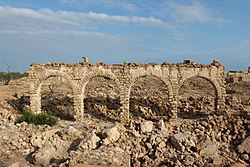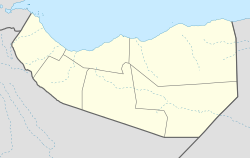
Marodi Jeh is an administrative region (gobol) in western Somaliland. It is the most populous region of the country. It is bordered by Awdal to the west, Sahil to the north, Togdheer to the east and Ethiopia to the south. Marodi Jeh was created by splitting the previously existing region (gobolka) Woqooyi Galbeed in two, the other part being Sahil. In 2007 the region of Woqooyi Galbeed was renamed to Maroodi Jeex. Woqooyi Galbeed was thus much larger than Marodi Jeh.
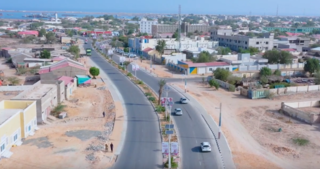
Berbera is the capital of the Sahil region of Somaliland and is the main sea port of the country, located approximately 160 km from the national capital, Hargeisa. Berbera is a coastal city and was the former capital of the British Somaliland protectorate before Hargeisa. It also served as a major port of the Ifat, Adal and Isaaq sultanates from the 13th to 19th centuries.
The Habar Yoonis alternatively spelled as Habr Yunis is a major clan part of the sub-clan Garhajis of the wider Isaaq. As descendants of Ismail bin Sheikh Isaaq, its members form a part of the wider Habar Magaadle confederation which constitutes the largest sub-clan of the Isaaq.
The Eidagale (Ciidangale/Ciidagale) (Arabic: عيدَغَلي, [which translates to "army joiner"], Full Name: Da'ud ibn Al-Qādhī Ismā'īl ibn ash-Shaykh Isḥāq ibn Aḥmad, is a major Somali clan and is a sub-division of the Garhajis clan of the Isaaq clan family. Members of this clan are concentrated in Somaliland and the Somali region of Ethiopia. The Eidagale are part of the four principal clans of the Isaaq clan family. They are the traditional holders of the Isaaq Sultanate since the 18th century. As descendants of Ismail bin Sheikh Isaaq, its members form a part of the Habar Magaadle confederation, and they constitute the largest sub-clan of the Isaaq. They are traditionally nomadic pastoralists, merchants and skilled poets.

The Isaaq (Somali: Reer Sheekh Isxaaq, is a major Somali clan. It is one of the largest Somali clans in the Horn of Africa, with a large and densely populated traditional territory.

Gabiley, also known as Gebiley, is a city in the Maroodi Jeex region of Somaliland.
The Garhajis historically known as the Habar Gerhajis is a major clan of the wider Isaaq clan family. They are the traditional holders of the Isaaq Sultanate and Habr Yunis Sultanate since the 18th century. As descendants of Ismail bin Sheikh Isaaq, its members form a part of the Habar Magaadle confederation, and they constitute the largest sub-clan of the Isaaq. The Garhajis are divided into two major sub-clans: the Habr Yunis and Eidagale. They are traditionally nomadic pastoralists, merchants and skilled poets.
The Habr Awal, also contemporarily known as the Subeer Awal, and alternately romanized as the Zubeyr Awal is a major Northern Somali clan of the wider Isaaq clan family, and is further divided into eight sub-clans of whom the two largest and most prominent are the Sa'ad Musa and Issa Musa sub-clans. Its members form a part of the Habar Magadle confederation.

Lughaya District is a district of the Awdal region in Somaliland. Lughaya District has a total population of 101,104 residents.
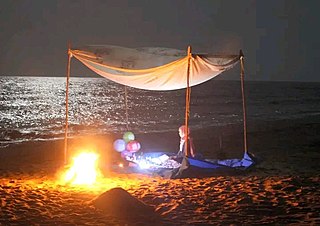
El-Sheikh is a coastal settlement in the western edge of the Sahil region of Somaliland.
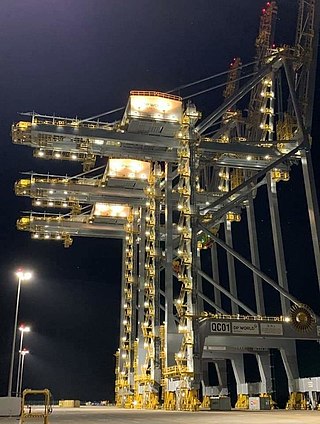
Sahil is an administrative region (gobol) in northern Somaliland with the port city of Berbera as its capital. It was separated from Woqooyi Galbeed and became a province in 1991. In 1998, the Sheikh District of Togdheer was incorporated into Sahil region. The region has a long coastline facing the Gulf of Aden to the north. Sahil borders Awdal to the northwest, Maroodi Jeex to the southwest, Togdheer to the south and Sanaag to the east.
The Habr Je'lo, Arabic: هبر جعلو, Full Name: Mūsa ibn ash-Shaykh Isḥāq ibn Aḥmad, historically known as the Habr Toljaala is a major Northern Somali clan of the wider Isaaq family. Its members form the confederation along with the Ibran, Sanbuur and Tolje’lo. The Habr Je'lo are divided into three further sub-tribes: the Mohamed Abokor, Musa Abokor, and Samane Abokor. Historically, the Mohamed Abokor were chiefly nomadic pastoralists, whereas the Musa Abokor and Omar obtained much of their wealth via their frankincense plantations in the mountainous interior adjacent to the coastline.The Habr Je'lo played a prominent role in the livestock and frankincense trade during the pre-colonial period.
The Issa Musa or ‘Isa Musa is a northern Somali clan. Its members form a part of the Habr Awal clan of the Isaaq clan family. The Isa Musa are divided into four major sub-clans: Mohammed Issa, Adam Issa, Abokor Issa and Idarais Issa. The Isa Musa traditionally consists of coastal people, nomadic pastoralist and merchants. This clan are primarily settled in Somaliland, including Maroodi Jeex, Togdheer, Sahil,Awdal,Djibouti Ethiopia, as well as Kenya. The Issa Musse have produced many prominent Somali figures with the Undersecretary General of the United Nations Abdulrahim Abby Farah, the first Somali Prime Minister & second President of Somaliland Muhammad Haji Ibrahim Egal, and the second tallest man in the world Hussein Bisad.
Sharmarke Ali Saleh was a leading 19th century Somali leader, captain, and merchant. He was known as "The African Rothschild " which indicates he was one of the richest man in Africa at that time and also the 'Political Boss of the Somali coast', a title which is a testament to his political influence in the region. He was the governor and ruler of Zeila, Berbera, and Tadjoura between 1841 and 1861, and for a time was known as the richest man along the Somali coast. His descendants would go on to become the traditional leaders of the Musa Arreh sub-clan of the Habr Yunis clan.
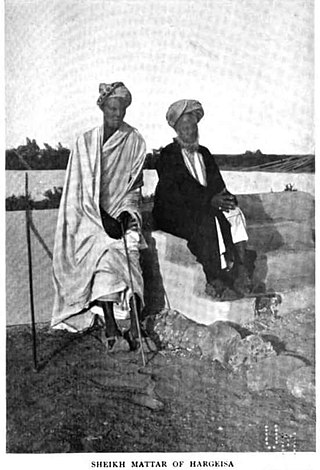
Madar Ahmed Shirwac, better known as Sheikh Madar was a 19th-century Somali political/religious leader, a social reformer, merchant and a jurist that was instrumental in the modern foundation of Hargeisa. He hailed from the Yunis Nuh division of the wider Sacad Muuse Habr Awal Isaaq clan. His tomb is now a venerated Sufi shrine in the city.
Karin is a historic coastal settlement located in the Sahil region of Somaliland.
The Musa Abokor is a Somali clan, and a 2 major sub-division of the muuse sh isxaaq clan of the Isaaq clan-family.

The Isaaq Sultanate was a Somali kingdom that ruled parts of the Horn of Africa during the 18th and 19th centuries. It spanned the territories of the Isaaq clan in modern-day Somaliland and Ethiopia. The sultanate was governed by the Rer Guled branch of the Garhajis clan and is the pre-colonial predecessor to the modern Republic of Somaliland.
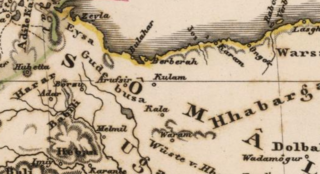
The Habr Yunis Sultanate was a Somali kingdom that ruled parts of the Horn of Africa during the 18th century. It spanned the territories of the Habr Yunis clan which is part of the wider Isaaq in modern day Somaliland and Ethiopia. The sultanate was governed by the Rer Ainanshe branch of the Habr Yunis clan.
The Sa'ad Musa or Saad Musa is a northern Somali clan. Its members form a part of the Habr Awal clan of the Isaaq clan family. The Sa'ad Musa traditionally consists of nomadic pastoralists, coastal people, merchants and farmers. The clan inhabits Somaliland, including Maroodi Jeex, and Sahil as well as Djibouti, the Somali Region of Ethiopia, Kenya and Tanzania.
